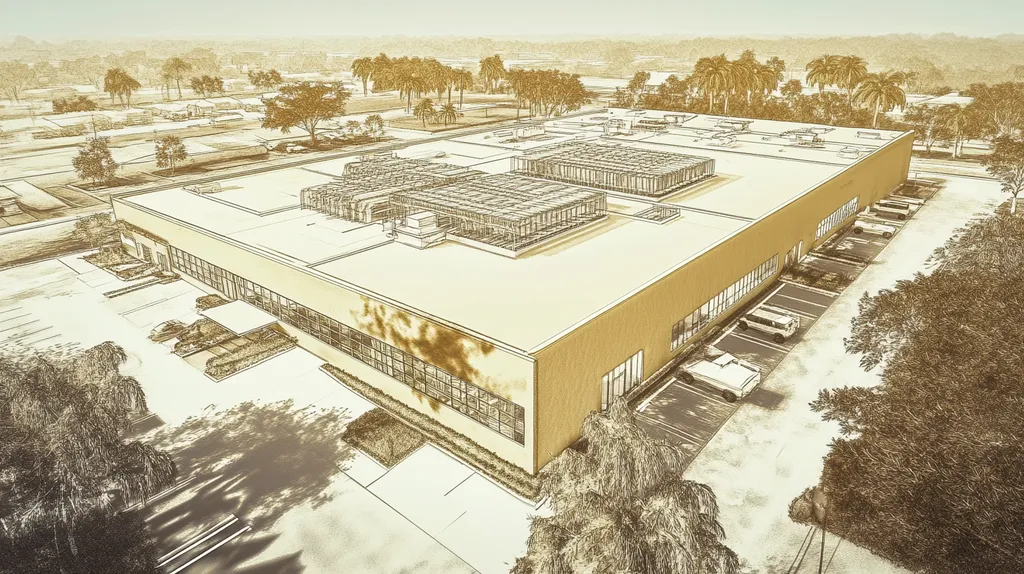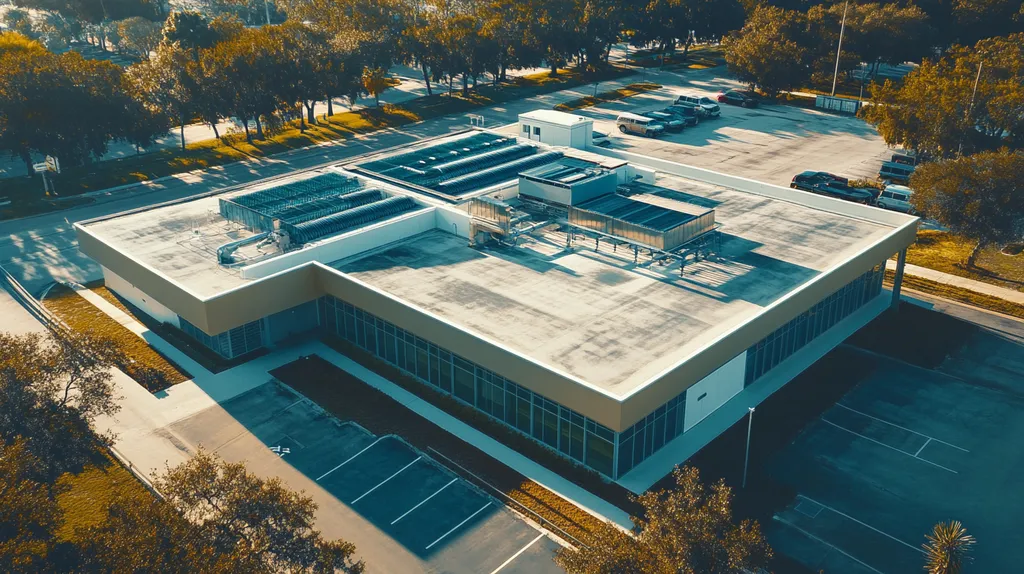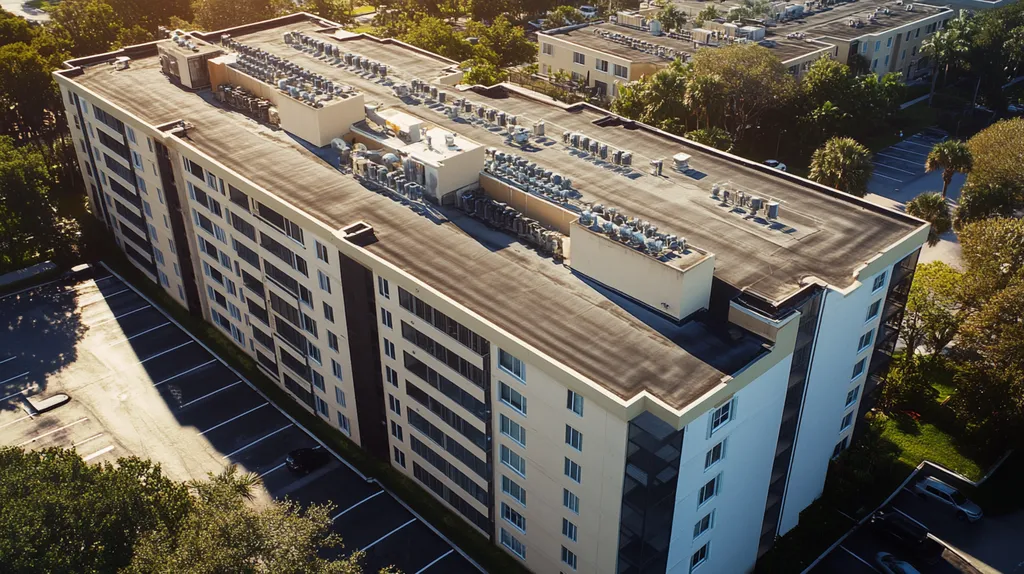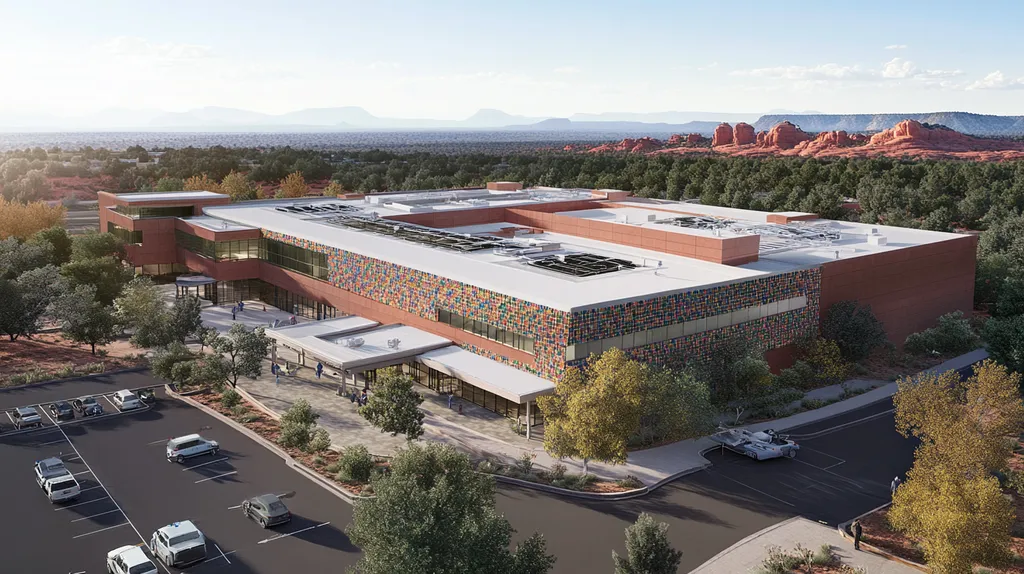Weather-related coating failures cost commercial property owners over $400 million annually in premature replacements and repairs. Recent industry studies show that up to 60% of these failures stem directly from improper weather considerations during application.
As climate patterns become increasingly unpredictable, understanding weather’s impact on coating timelines has evolved from a scheduling preference into a critical business imperative.
This comprehensive guide examines how temperature, moisture, and atmospheric conditions affect coating performance, while providing practical strategies for optimizing application timing and protecting substantial roofing investments.
SECTION 1: FUNDAMENTAL CONCEPTS
Weather conditions can make or break a commercial roof coating project, directly impacting both immediate success and long-term performance. Recent industry data shows that up to 60% of coating failures stem from weather-related application issues. For facility managers, understanding these weather dynamics isn’t just about scheduling – it’s about protecting substantial investments and preventing costly re-work.
Effects of Temperature and UV Radiation on Roof Coatings
Temperature variations create unique challenges during roof coating applications. When temperatures drop below recommended levels, coatings become thick and difficult to apply evenly, compromising the protective barrier. Conversely, excessive heat accelerates drying, potentially preventing proper adhesion and creating weak spots.
UV radiation poses a significant threat to roof coating integrity. Prolonged exposure breaks down the chemical bonds in coating materials, leading to cracks, blistering, and loss of elasticity. High temperatures amplify these effects through thermal expansion and contraction cycles, which stress and weaken the roof structure over time. (source: Castagra)
Most coating manufacturers specify an ideal temperature range between 50°F and 85°F for application. Operating outside these parameters significantly reduces coating effectiveness and longevity, potentially voiding warranties and requiring premature replacement.
Modern coating technologies offer expanded application windows, but temperature monitoring remains crucial. Smart facility managers track both ambient and surface temperatures throughout the application process, ensuring optimal conditions for maximum coating performance.
Influence of Moisture and Precipitation on Curing Times
Moisture control represents a critical factor in successful roof coating applications. Even minimal moisture on the substrate can prevent proper adhesion, creating weak spots that lead to premature coating failure.
Relative humidity levels above 85% typically extend curing times by 30-50%. This delay increases the risk of wash-off from unexpected precipitation and raises labor costs through extended project timelines.
Morning dew presents a particular challenge for early starts. Surface moisture must evaporate completely before coating can begin, often pushing start times to mid-morning in humid climates.
Successful moisture management requires monitoring both weather forecasts and real-time conditions. Leading facilities teams use moisture meters to verify substrate readiness, ensuring optimal coating adhesion.
Impact of Wind and Atmospheric Conditions on Application
Wind speeds above 15 mph create serious application challenges. Strong winds affect spray patterns and material distribution, leading to uneven coverage and potential weak spots in the protective coating.
Airborne debris becomes a major concern during windy conditions. Dust, leaves, and other particles can embed themselves in wet coating, compromising both appearance and performance.
Barometric pressure changes influence drying times and coating behavior. Low-pressure systems typically bring higher humidity and longer cure times, while high-pressure systems often provide better application conditions.
Professional coating teams monitor local weather patterns and plan applications during optimal atmospheric conditions. This strategic approach maximizes coating effectiveness while minimizing application risks.
SECTION 2: SYSTEM COMPONENTS
Every commercial roof represents a complex system where components must work together flawlessly under challenging weather conditions. Recent data shows that 35% of premature roof failures stem from component incompatibility or weather-related stress. Understanding how weather affects each roofing element is crucial for protecting substantial facility investments and maintaining building integrity.
Key Roofing Materials Sensitive to Weather Conditions
Weather conditions create distinct challenges for different roofing materials. Single-ply membranes become brittle and difficult to work with in cold temperatures, while modified bitumen products can become too soft in extreme heat.
Temperature fluctuations significantly impact coating viscosity and workability. Below 50°F, most coatings thicken substantially, making even application nearly impossible. Above 90°F, rapid curing can prevent proper adhesion.
High humidity levels affect solvent-based coatings differently than water-based options. Moisture-cured urethanes actually benefit from moderate humidity, while acrylic coatings require lower humidity levels for optimal curing.
Modern coating technologies offer improved weather resistance, but proper material selection remains crucial. Each coating type has specific temperature and humidity requirements that must align with local weather patterns.
Role of Roof Membranes, Flashings, and Sealants
Winter weather poses particular challenges for roof system components, as freeze-thaw cycles can cause significant deterioration. Water trapped within roof membranes expands when frozen, creating cracks and compromising the system’s integrity.
Flashings become especially vulnerable during extreme weather events, with wind and ice damage potentially compromising waterproofing effectiveness. Proper timing of coating applications helps protect these critical components.
Poor ventilation and insulation often lead to condensation issues that affect sealant performance. This moisture accumulation can trigger mold growth and accelerate structural deterioration if left unchecked.
Snow loads create additional pressure on flat roof systems, requiring careful monitoring and professional removal to prevent damage. (source: Simon Roofing)
Interactions Between Insulation and Coating Performance
Insulation condition directly impacts coating adhesion and longevity. Wet or compressed insulation creates cold spots that can lead to condensation, undermining coating performance from below.
Temperature differentials across the roof surface caused by inconsistent insulation can create stress points in the coating system. These areas often become failure points during thermal cycling.
Proper ventilation works with insulation to manage moisture levels within the roof assembly. Without adequate airflow, trapped moisture can compromise coating adhesion and accelerate deterioration.
Regular thermal imaging and moisture surveys help identify insulation issues before coating application. This proactive approach ensures optimal conditions for coating success and extends system longevity.
SECTION 3: IMPLEMENTATION METHODS
Weather conditions can make the difference between a successful commercial roof coating project and a costly failure. Industry data shows that improper implementation methods account for over 40% of premature coating failures, with weather-related issues being the primary culprit. Understanding and executing proper implementation methods isn’t just about following procedures – it’s about protecting significant investments and ensuring long-term roof performance.
Weather Condition Assessment Before Coating Application
Accurate weather assessment forms the foundation of successful coating projects. Temperature, humidity, wind speed, and precipitation forecasts must be evaluated not just for the day of application, but for the entire curing period.
Modern weather monitoring tools have revolutionized the assessment process. Digital weather stations can now provide real-time surface temperature readings and dew point calculations, enabling precise application timing.
Project managers must establish clear weather-related benchmarks before beginning any coating work. These typically include minimum and maximum temperature ranges, acceptable humidity levels, and wind speed limitations.
Documentation of weather conditions throughout the project provides valuable data for warranty purposes and helps optimize future coating applications. Regular monitoring and recording of conditions should continue through the entire curing process.
Timing and Scheduling Coating Projects for Optimal Cure
Successful coating projects require careful alignment with seasonal weather patterns. Weather conditions can halt roofing work and cause significant delays, making project timing crucial for both efficiency and effectiveness.
The ideal application window typically falls between spring and fall, when temperatures remain moderate and precipitation is more predictable. Planning projects during these favorable seasons helps ensure smoother execution and proper curing conditions. (source: NARoofing.com)
Daily scheduling requires equal attention to detail. Most coating applications should begin after morning dew has evaporated but early enough to allow adequate curing time before evening temperature drops.
Buffer days must be built into project timelines to accommodate unexpected weather events. This flexible scheduling approach helps maintain project momentum while ensuring optimal application conditions.
Surface Preparation Techniques in Varied Climates
Different climates demand specialized surface preparation approaches. High-humidity environments require extended drying times after cleaning, while arid conditions may need surface cooling to prevent flash-drying of coatings.
Surface temperature monitoring becomes critical in extreme weather regions. Infrared thermometers help verify that substrate temperatures remain within manufacturer specifications throughout the preparation process.
Moisture testing must adapt to local climate conditions. In humid regions, multiple moisture meter readings should be taken throughout the day to confirm surface readiness.
Climate-specific primers and surface treatments can help overcome challenging weather conditions. These specialized products create optimal bonding conditions even when ambient conditions aren’t ideal.
SECTION 4: MAINTENANCE REQUIREMENTS
The increasing frequency of extreme weather events has transformed roof coating maintenance from a routine task into a critical investment protection strategy. Industry data shows that proactive maintenance programs can extend coating lifespans by up to 50% while reducing emergency repair costs by 70%. For facility managers, establishing comprehensive maintenance protocols isn’t just about preserving warranties – it’s about safeguarding their buildings against increasingly unpredictable climate challenges.
Inspecting Weather-Related Wear and Damage Post-Coating
Professional inspections should occur at least quarterly, with additional checks following severe weather events. These evaluations must focus on high-stress areas like corners, transitions, and penetrations where weather damage typically begins.
Modern inspection protocols incorporate infrared moisture detection and adhesion testing to identify potential failures before they become visible. Early detection of moisture infiltration or coating separation can prevent extensive damage to underlying systems.
Digital documentation systems now enable precise tracking of coating degradation patterns. This data helps facility managers predict maintenance needs and optimize repair timing.
Special attention must focus on areas where different building materials meet, as these junctions often experience accelerated weathering due to thermal movement and stress concentration.
Repair Protocols for Weather-Induced Coating Failures
In an era of unpredictable weather patterns and extreme climate events, rapid response protocols for coating repairs have become essential. Successful repair strategies require proper material selection and precise application techniques tailored to specific weather conditions.
Surface preparation remains critical for repair success, with cleanliness and moisture control being paramount. Even small repairs require careful attention to manufacturer specifications regarding temperature and humidity limits.
Emerging coating technologies offer enhanced weather resistance and simplified repair procedures. These advanced materials provide longer application windows and better tolerance for varying environmental conditions.
Integration of weather monitoring systems with maintenance schedules helps optimize repair timing and ensures proper curing conditions. (source: Aquila Commercial)
Seasonal Maintenance Strategies to Extend Coating Life
Fall maintenance focuses on preparing the coating system for winter stresses. This includes thorough cleaning of drainage systems, removal of organic debris, and inspection of all penetrations and flashings.
Winter protocols emphasize snow load management and ice prevention. Regular monitoring helps prevent mechanical damage from snow removal activities while maintaining coating integrity.
Spring maintenance concentrates on repairing any winter damage and preparing for summer heat stress. This includes addressing any coating separation or blistering before UV exposure can worsen the condition.
Summer maintenance prioritizes UV protection and heat management. Regular cleaning helps maintain coating reflectivity, while prompt repair of any damage prevents heat-accelerated deterioration.
SECTION 5: PERFORMANCE METRICS
Performance metrics have become increasingly critical as commercial roof coatings face unprecedented weather challenges. Recent data shows that over 40% of coating failures stem from inadequate performance monitoring and measurement. With coating systems representing substantial facility investments, implementing rigorous metrics isn’t just about maintaining standards – it’s about protecting assets worth hundreds of thousands of dollars from premature failure.
Measuring Adhesion and Flexibility Under Weather Stress
Modern coating systems must maintain adhesion and flexibility across increasingly extreme temperature ranges. Standard pull tests now require minimum adhesion values 25% higher than a decade ago to account for more severe weather cycling.
Digital adhesion testing equipment provides real-time data on coating performance under various weather conditions. This technology enables precise tracking of how environmental stresses affect coating integrity over time.
Flexibility measurements must account for both immediate and long-term performance. Current standards require coatings to maintain elasticity through thousands of thermal cycles without cracking or separating.
Advanced monitoring systems now track adhesion and flexibility simultaneously, creating comprehensive performance profiles that predict potential failure points before they develop.
Evaluating Coating Thickness and Coverage Consistency
Coating thickness directly correlates with weather resistance and system longevity. Digital thickness gauges now provide instant readings accurate to within one mil, ensuring uniform coverage across entire roof surfaces.
Mapping technology creates detailed thickness profiles, identifying potential thin spots before they compromise system integrity. This proactive approach prevents localized failures that often lead to widespread coating damage.
Coverage consistency must be verified through both wet and dry film measurements. Modern inspection protocols require documentation of thickness readings at standardized intervals across the entire coated surface.
Regular thickness monitoring throughout the coating’s service life helps identify areas of accelerated wear. This data drives targeted maintenance strategies that extend overall system performance.
Monitoring Long-Term Durability in Variable Climates
As global weather patterns become more extreme, durability monitoring has evolved into a sophisticated science. Smart coating systems now incorporate embedded sensors that continuously track performance metrics and environmental conditions.
Advanced materials and monitoring technologies help evaluate coating resilience against increasingly unpredictable weather events. These systems provide early warning of potential failures, enabling proactive maintenance before serious damage occurs.
Regular performance assessments must now account for both gradual degradation and acute weather stress. Modern coating systems require comprehensive monitoring protocols that track multiple performance indicators simultaneously.
Integration of weather monitoring systems with coating performance metrics enables precise prediction of maintenance needs and optimal timing for recoating projects. (source: Aquila Commercial)
SECTION 6: OPTIMIZATION STRATEGIES
Weather volatility has transformed roof coating optimization from a scheduling preference into a business imperative. Recent industry data shows that poorly optimized coating projects run 45% over budget and face twice the risk of premature failure. For facility managers, implementing comprehensive optimization strategies isn’t just about efficiency – it’s about protecting substantial investments against increasingly unpredictable climate patterns.
Selecting Weather-Resistant Coatings for Specific Regions
Prolonged UV exposure presents a primary threat to coating longevity, causing material degradation, cracking, and loss of elasticity. Selecting UV-resistant formulations becomes especially critical in high-sun regions where standard coatings can fail prematurely.
Thermal cycling creates unique challenges in areas with extreme temperature variations. Advanced elastomeric coatings provide superior flexibility, maintaining integrity through thousands of expansion-contraction cycles.
Coastal environments demand specialized salt-resistant formulations to prevent premature deterioration. These enhanced coatings incorporate corrosion inhibitors that extend service life in marine atmospheres.
Proper coating selection can extend system longevity by up to 60% while reducing weather-related application delays. Modern formulations offer broader application windows and faster cure times, even in challenging conditions.
Application Technology Advances to Mitigate Weather Impacts
Digital spray systems now provide real-time thickness monitoring and temperature compensation, ensuring uniform coverage regardless of weather conditions. These advanced tools automatically adjust application rates based on ambient conditions.
Infrared curing technologies enable coating application in previously prohibitive weather conditions. This innovation extends the working season and reduces weather-related delays.
Automated application systems maintain consistent coverage while reducing worker exposure to adverse conditions. These systems can operate effectively in wind speeds up to 20 mph, expanding the application window significantly.
Remote monitoring platforms integrate weather data with application parameters, optimizing timing and technique for maximum coating performance. (source: Castagra)
Proactive Weather Monitoring and Contingency Planning
Advanced weather monitoring systems now provide facility-specific forecasts up to 14 days in advance. This extended visibility enables better project planning and resource allocation.
Real-time atmospheric monitoring equipment tracks temperature, humidity, and dew point at the job site. These systems alert crews to changing conditions that could impact coating performance.
Modern project management platforms automatically integrate weather data with scheduling algorithms. This technology helps identify optimal application windows and potential delay risks.
Comprehensive contingency plans should include specific trigger points for weather-related decisions. Clear protocols for different weather scenarios help maintain project momentum while ensuring coating quality.
Moving Forward
Weather-related coating failures cost the commercial roofing industry over $400 million annually, with 60% of these failures directly attributable to poor weather considerations during application.
As climate patterns become increasingly unpredictable, the integration of advanced weather monitoring technology with sophisticated coating systems has become essential for project success.
Modern facility managers now have access to unprecedented tools for optimizing coating applications, from real-time atmospheric monitoring to weather-adaptive spray systems.
The future of commercial roof coating demands a proactive, data-driven approach to weather management – one that combines cutting-edge materials science with precise application timing and comprehensive maintenance protocols.
Those who adapt to these evolving requirements will protect their facilities while reducing lifetime coating costs by up to 40%.
FREQUENTLY ASKED QUESTIONS
Q. How does temperature affect a commercial roof coating project?
A. Temperature impacts coating application significantly. When it drops below 50°F, coatings thicken, making application difficult. Conversely, excessive heat can cause rapid drying, preventing proper adhesion and creating weak spots.
Q. What roofing materials are affected by weather conditions on an industrial roof?
A. Different materials respond uniquely to weather. Cold temperatures can make single-ply membranes brittle, while heat can soften modified bitumen products. Awareness of these dynamics is crucial for proper application and performance.
Q. How can weather assessments improve commercial roof coating timelines?
A. Accurate weather assessments before roofing work set the foundation for success. Evaluating conditions like temperature and humidity not only streamlines application but also enhances overall coat performance during curing.
Q. How often should I perform inspections after a commercial roof coating?
A. Inspections should occur quarterly and after severe weather. This regular check-up identifies potential damage early and saves on costly repairs. Early detection is essential for maintaining the roof’s integrity.
Q. What metrics should I track for industrial roof coating performance?
A. It’s essential to monitor adhesion, flexibility, thickness, and coverage uniformity. Advanced technologies offer real-time feedback on these measurements, helping identify potential issues before they lead to costly failures.
Q. How can I optimize my commercial roof coating project?
A. Selecting weather-resistant coatings tailored to your region is key. Employing advanced application technologies and proactive weather monitoring further optimizes your project, ensuring better performance and extended longevity even in unpredictable climates.
Q. What role do contaminants play in commercial roof coating failures?
A. Contaminants can severely compromise coating adhesion and integrity. Dust, debris, and moisture left on the surface prevent proper bonding. Keeping surfaces clean before application is crucial for the longevity of your coating system.










